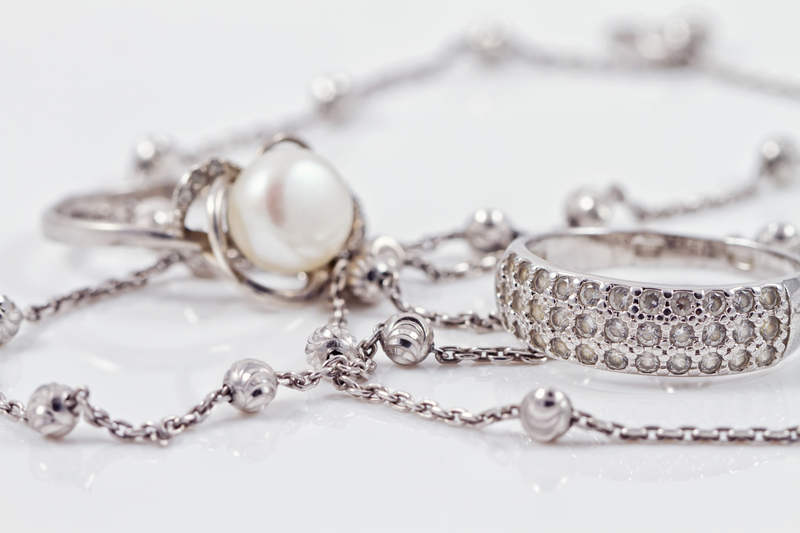Why Moving a Piano Is Harder Than It Looks and the Risks of DIY Attempts
On the surface, moving a piano might seem like a straightforward task. After all, with a group of strong friends and a sturdy vehicle, what could go wrong? In reality, relocating this elegant instrument is far more complicated than most people anticipate. Not only is the sheer size and weight a challenge, but the internal complexity and sensitivity of a piano make it an object that requires meticulous care and expertise. In this comprehensive article, we'll examine why piano moving is so difficult, the many risks of attempting a DIY piano move, and why hiring professionals is crucial for both the instrument's and your own safety.
Table of Contents
- Understanding Piano Complexity
- Types of Pianos and Their Unique Challenges
- Weight and Size Difficulties
- How Pianos Differ from Other Heavy Furniture
- What Can Go Wrong in a DIY Piano Move
- Personal Injury and Safety Risks
- Potential Damage to the Piano
- Property Damage During Piano Moves
- The Importance of Professional Piano Movers
- Cost Comparison: DIY vs. Professionals
- Tips for a Successful Piano Move
- Final Thoughts
Understanding Piano Complexity
Pianos are not just large objects; they are complex musical instruments with thousands of moving parts. Grand pianos, baby grands, and upright pianos all contain intricate assemblies of strings, hammers, pedals, and keys. The delicate nature of these components means that even a slight jolt can throw a piano out of tune or damage its internal mechanism.
- Average number of tuned strings: Over 220
- Material variety: Wood, iron, felt, and steel
- Internal tension: Thousands of pounds on strings
Few pieces of furniture demand as much care and specialized knowledge to move safely.
Types of Pianos and Their Unique Challenges
Not all pianos are created equal. The kind you own greatly impacts the complexity of your move:
Upright Pianos
- These are typically lighter and more compact than grand pianos, but still extremely heavy, ranging from 300 to 800 pounds.
- Their height and center of gravity make them difficult to maneuver through doorways or up and down stairs.
Grand and Baby Grand Pianos
- These instruments can weigh upwards of 1,000 pounds.
- Their delicate legs, protruding parts, and large soundboards make them exceedingly awkward to pivot or hoist.
- Often require partial disassembly before moving.
Digital Pianos
- While lighter and more transportable, digital pianos can still be sensitive to bumps and drops.
Each type requires a different strategy and, often, custom equipment for a safe relocation.
Weight and Size Difficulties
One of the biggest misconceptions about relocating a piano is underestimating its size and weight. Even the smallest upright models are much heavier than they look. Grand pianos can exceed 1,200 pounds, making them more than just a "heavy lift."
Why Weight Matters in a Piano Move
- Difficult to grip: Many pianos have smooth surfaces with few places for a secure hold.
- Center of gravity: Their awkward distributions make them prone to tipping.
- Limited visibility: Their size can obscure stairs, corners, or low ceilings during a move.
Moving a grand piano upstairs or through narrow hallways without professional help can be both dangerous and nearly impossible.
How Pianos Differ from Other Heavy Furniture
It's tempting to think of a piano as just another cumbersome household item like a refrigerator or couch. However, pianos are fragile instruments that require specialized handling:
- Internal Mechanisms: Over 10,000 precision parts that can be thrown out of alignment by sudden impact.
- Vulnerable Legs and Casters: Ornate, delicate legs on grand pianos can snap if twisted or overloaded.
- Soundboard Damage: Any major jolt can crack the soundboard, ruining the instrument's tone and value.
A bruise or bump on your fridge is merely cosmetic, but damage to your piano can be costly, complex, and sometimes irreparable.
What Can Go Wrong in a DIY Piano Move?
Attempting a DIY piano move exposes you to a range of issues--from minor inconveniences to catastrophic damage and personal injury. A lack of experience, improper equipment, and unfamiliarity with the instrument's nuances can have disastrous results.
Common Piano Moving Mistakes
- Underestimating Weight: Ignoring the need for multiple helpers or heavy-duty equipment.
- No Proper Padding: Failing to protect the piano's finish and internal parts during transit.
- Poor Planning: Overlooking challenging turns, tight spaces, or uneven ground between locations.
- Improper Lifting Technique: Attempting to lift with your back instead of your legs, leading to injuries.
- Incorrect Loading: Inadequate tying or strapping, causing the piano to shift and get damaged during transport.
Personal Injury and Safety Risks
One of the most serious risks of moving a piano without professional help is bodily harm. The physical stresses associated with lifting--or even just stabilizing--such a heavy and awkward object can cause significant injuries:
- Back Injuries: Herniated discs or pulled muscles from improper lifting.
- Broken Bones: If a piano tips or falls unexpectedly.
- Foot and Hand Injuries: Crushed fingers or toes are common due to dropping or trapping during movement.
- Strains and Sprains: Even "minor" injuries can lead to weeks off work or permanent disability.
Medical costs, lost wages, and long-term pain can easily outweigh the expense of hiring professional piano movers.
Potential Damage to the Piano
The risks of moving a piano yourself extend well beyond personal injury. The instrument itself can become severely damaged during an amateur move:
- Cracked Soundboard: This is one of the most expensive repairs and can irreparably alter the piano's sound.
- Broken Keys and Pedals: Bumping or dropping can snap these delicate parts.
- Scratched or Chipped Finish: Even a slight graze against a wall or door frame can leave lasting marks.
- Internal Misalignment: Jostling can throw hammers, keys, or strings out of sync--often requiring costly tuning or repair.
Insurance policies frequently do not cover self-caused moving damage, leaving the owner to cover potentially thousands of dollars in restoration expenses.
Property Damage During Piano Moves
Another overlooked hazard is potential damage to your home or business premises:
- Dented Walls: Scraping corners and entryways can leave unsightly gouges or holes.
- Scuffed Floors: Pianos can tear hardwood, gouge tile, or snag carpets--especially when dragged.
- Broken Stairs and Railings: Stairs may be unable to support a piano's immense weight, and railings can be destroyed if used as leverage.
- Damaged Door Frames: Narrow or low-clearance entries are especially vulnerable.
Such renovation repairs can quickly add up, making a "budget-friendly" DIY move far more expensive than anticipated.
The Importance of Professional Piano Movers
If you're wondering why professional piano movement services exist, consider the unique skills and machinery they bring:
- Specialized Training: Movers understand the structural weak points and how best to secure or disassemble your specific piano.
- Proper Equipment: Use of heavy-duty moving straps, dollies, padding, ramps, and sometimes cranes.
- Insurance Coverage: Should something go wrong, your investment is protected.
- Efficiency: Experienced teams can plan for and overcome challenging layouts or obstacles quickly.
Professional movers treat your piano as the precious instrument it is, ensuring it arrives at its destination undamaged and ready to play.
Cost Comparison: DIY vs. Professionals
It can be tempting to try moving your piano yourself to save money. However, compare the actual costs:
Typical DIY Expenses
- Truck rental and fuel
- Moving blankets, straps, and dollies (often bought or rented separately)
- Repair costs for potential property or piano damage
- Medical bills for injuries
- Potential cost of lost time at work due to injury
Professional Piano Movers' Fees
- Includes all necessary equipment
- Insurance protection included
- Move completed quickly and efficiently
For most families, the gap between a DIY move and professional services is smaller than you might think--and, in the event of a problem, the pro's insurance and expertise can save you time, money, and stress.
Tips for a Successful Piano Move
If you're determined to relocate your piano yourself, it's essential to follow best practices. Here are some critical tips to reduce risk:
- Plan Your Route: Measure all doors, staircases, and elevators ahead of time. Look for obstacles and tight corners.
- Gather the Right Equipment: Invest in piano-specific moving gear. Standard dollies or straps are often insufficient.
- Enlist Adequate Help: You'll need at least 3-4 strong, experienced movers.
- Protect Surfaces: Use thick blankets and padding on both the piano and any surfaces it might touch.
- Move Slowly and Carefully: No rushing. Take frequent breaks to avoid fatigue-induced mistakes.
- Consider Partial Disassembly: In some cases, legs and pedals can be removed for safer transport--if you know how.
- Secure During Transit: Make sure the piano cannot move or shift inside the vehicle.
- Immediately Retune: Even with the best precautions, your piano will likely need tuning after the move.
Remember, the safest choice is almost always hiring a professional!
Final Thoughts: The Realities of Piano Relocation
The notion that moving a piano is simple is one of the most persistent but dangerous misconceptions among musicians and homeowners. The combination of immense size, delicate mechanisms, and awkward shape make it one of the trickiest and riskiest objects to handle. When considering the risks of a DIY piano move--from severe personal injury and costly damage to irreparable harm to your treasured instrument--the value of working with experienced professionals becomes obvious. For the sake of your health, your property, and your piano, trust the experts and enjoy the peace of mind that your cherished instrument will arrive perfectly intact.
Ready to relocate your piano? Think twice before trying it yourself--and consider hiring experienced piano movers for a safe, successful move!





